From the Trenches
Battle of the Proxies
By ROGER ATWOOD
Monday, February 10, 2014
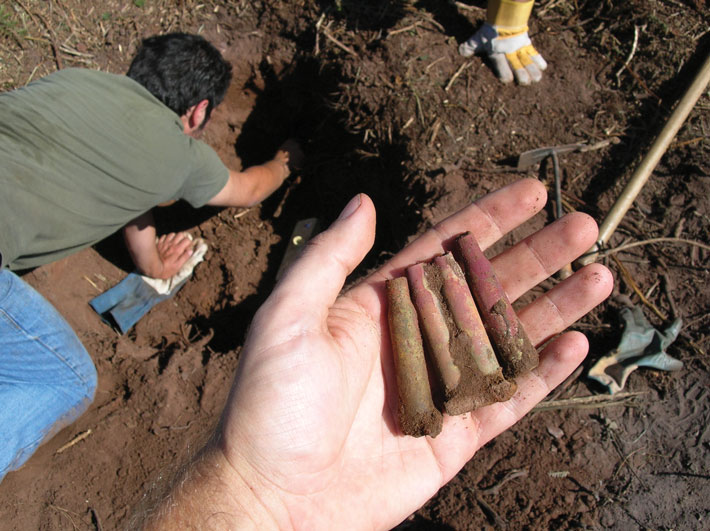 Two years before the outbreak of World War II, countries representing Europe’s warring ideologies fought by proxy in the Spanish Civil War—with the Soviets and French supporting the Republicans, and Germany and Italy behind the insurgent Nationalists. Now, a researcher digging near the northern Spanish city of Oviedo has found more than 200 bullets and casings from as far away as the Soviet Union and Germany, vivid reminders of the foreign aid offered by foes on the edge of their own disastrous conflict.
Two years before the outbreak of World War II, countries representing Europe’s warring ideologies fought by proxy in the Spanish Civil War—with the Soviets and French supporting the Republicans, and Germany and Italy behind the insurgent Nationalists. Now, a researcher digging near the northern Spanish city of Oviedo has found more than 200 bullets and casings from as far away as the Soviet Union and Germany, vivid reminders of the foreign aid offered by foes on the edge of their own disastrous conflict.
Alfonso Fanjul, a doctoral candidate at the Autonomous University of Madrid, made the discovery at a hilltop battlefield where Nationalist forces supporting Francisco Franco clashed, after a long standoff, with Republican troops loyal to the left-leaning Popular Front government in 1937. Franco’s forces eventually won the battle, and the war. Yet the discovery of so much war matériel from abroad, the origins of which are determined by tiny factory markings, suggests how quickly and deeply foreign powers became involved in the fight—and how the battle’s outcome might have been different in their absence.
“We’ve found a large amount of German munitions that were sent by Adolf Hitler to the Nationalists, munitions not available on the open arms market,” says Fanjul. He also discovered ammunition sent to Republican forces from Poland, Czechoslovakia, France, the Soviet Union, and even Mexico. Besides the munitions, which also include Spanish-made casings used by the Nationalists after they seized Oviedo’s garrison in 1936, Fanjul has found the remains of about 20 of the thousands of soldiers who died there, as well as boots, helmets, and dog tags. But disturbing war graves and the ethical issue this raises are not the project’s goal. “We want to show how to perform Spanish Civil War archaeology,” Fanjul says, “to unearth the site’s fortifications for the public, and to find new data to understand what happened.”
Turtle Power
By SAMIR S. PATEL
Monday, February 10, 2014
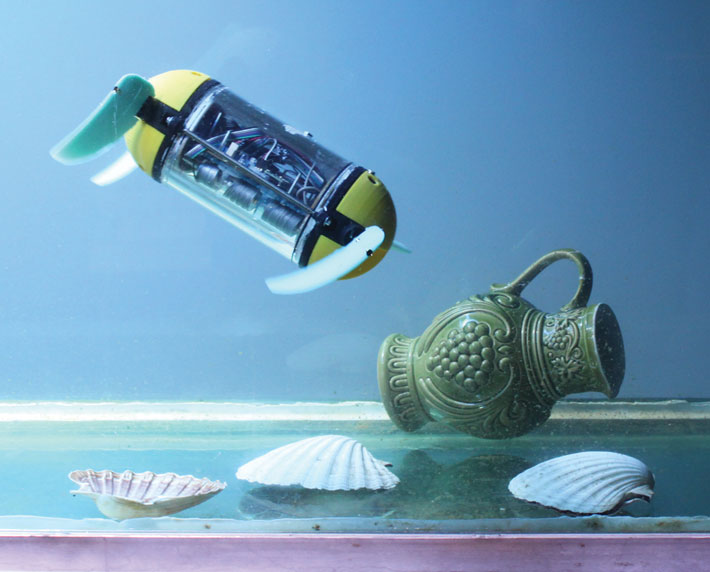 Remotely operated vehicles (ROVs) are excellent for examining historical sites underwater, but they’re not designed for going inside intact wrecks. Meet U-CAT, a tiny new underwater robot that is small enough to take cameras and other sensors where traditional ROVs can’t. Designers at the Centre for Biorobotics at Tallinn University of Technology in Estonia modeled U-CAT on a sea turtle, with four flippers that make the robot uniquely maneuverable. Because the device has no propellers, it is less likely to stir up blinding silt in the tight confines of a wreck. According to Maarja Kruusmaa, head of the Centre, U-CAT might also be useful in environmental monitoring and search-and-rescue operations. Field tests are planned—once the ice in Estonia melts this spring.
Remotely operated vehicles (ROVs) are excellent for examining historical sites underwater, but they’re not designed for going inside intact wrecks. Meet U-CAT, a tiny new underwater robot that is small enough to take cameras and other sensors where traditional ROVs can’t. Designers at the Centre for Biorobotics at Tallinn University of Technology in Estonia modeled U-CAT on a sea turtle, with four flippers that make the robot uniquely maneuverable. Because the device has no propellers, it is less likely to stir up blinding silt in the tight confines of a wreck. According to Maarja Kruusmaa, head of the Centre, U-CAT might also be useful in environmental monitoring and search-and-rescue operations. Field tests are planned—once the ice in Estonia melts this spring.
Did Neanderthals Bury Their Dead?
By ZACH ZORICH
Monday, February 10, 2014
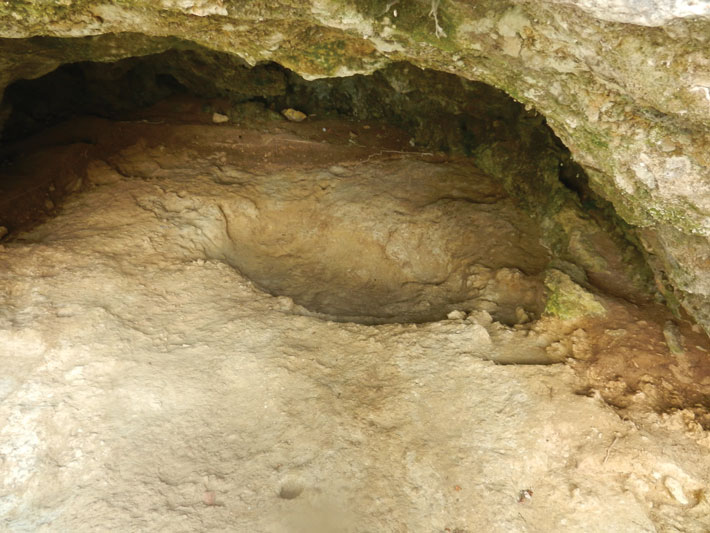 More than 100 years ago, archaeologists first excavated the cave of La Chapelle-aux-Saints in southwestern France and made a spectacular discovery—what seemed to be an intact Neanderthal burial. However, excavation methods in the early twentieth century were sloppy by modern standards, and the 20 or so Neanderthal “burials” found since then have all been seriously questioned—many believe they are the result of natural features and depositional processes. Now, a research team led by Cédric Beauval of the private company Archéosphère and William Rendu, a researcher at France’s National Center for Scientific Research, have reexamined La Chapelle-aux-Saints and found evidence that the burial is authentic. Their analysis shows that the burial pit is not a natural feature, and probably was dug by Neanderthals. But Rendu does not believe these burials were common—a 2011 reanalysis of a purported Neanderthal burial at Roc de Marsal showed that it was the result of natural processes. “Some of the Neanderthals in some regions, in very particular moments, made these kind of burials,” Rendu says. Having burial practices suggests that Neanderthals possessed spiritual beliefs, but what they may have been is anybody’s guess.
More than 100 years ago, archaeologists first excavated the cave of La Chapelle-aux-Saints in southwestern France and made a spectacular discovery—what seemed to be an intact Neanderthal burial. However, excavation methods in the early twentieth century were sloppy by modern standards, and the 20 or so Neanderthal “burials” found since then have all been seriously questioned—many believe they are the result of natural features and depositional processes. Now, a research team led by Cédric Beauval of the private company Archéosphère and William Rendu, a researcher at France’s National Center for Scientific Research, have reexamined La Chapelle-aux-Saints and found evidence that the burial is authentic. Their analysis shows that the burial pit is not a natural feature, and probably was dug by Neanderthals. But Rendu does not believe these burials were common—a 2011 reanalysis of a purported Neanderthal burial at Roc de Marsal showed that it was the result of natural processes. “Some of the Neanderthals in some regions, in very particular moments, made these kind of burials,” Rendu says. Having burial practices suggests that Neanderthals possessed spiritual beliefs, but what they may have been is anybody’s guess.
Florida History Springs Forth
By NIKHIL SWAMINATHAN
Monday, February 10, 2014
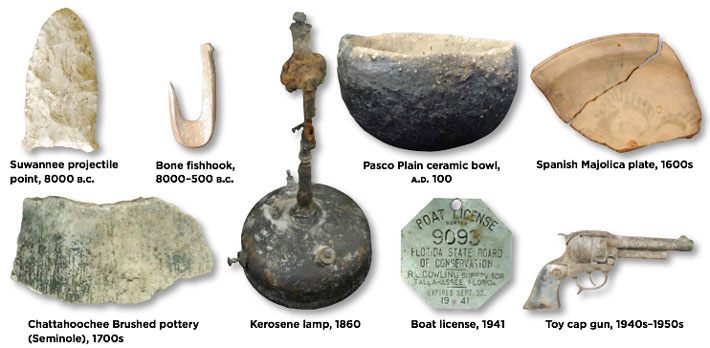
About 70 miles north of Tampa, Florida, lies the spring-fed source of the Chassahowitzka River. Its name means “a place for the hanging pumpkins” in Seminole, and until recently it was blocked by septic tank runoff and algal overgrowth. When the Southwest Florida Water Management District decided to clean the spring up last year, it brought in SEARCH, a local cultural resources management company. Good thing, too, since amid the refuse was thousands of years of history.
Artifacts pulled out over the four-and-a-half-month effort include a Suwannee point that, according to Michael Arbuthnot, an archaeologist with SEARCH, likely dates to 10,000 years ago. Dredgers also found a rare, intact Pasco Plain ceramic vessel, dating back 2,000 years to the Woodland period, as well as pottery brought to the Americas by Spanish explorers and a toy cap gun dating to the mid-twentieth century. “Florida springs are widely known as magnets for human activity, both prehistoric, historic, and modern,” says Arbuthnot. “For the relatively low cost of having an archaeologist present, we’ve opened up the Chassahowitzka Springs and the material it held for all to see.”
Barbarian Body Modification
By NIKHIL SWAMINATHAN
Monday, February 10, 2014
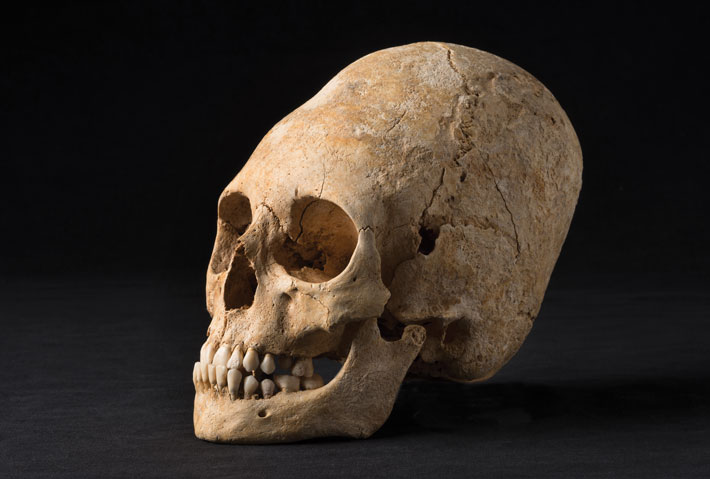 Archaeologists digging in Obernai, a commune in northeastern France, discovered a deformed female skull in a necropolis containing 18 burials dating to the fifth century A.D., or the early Middle Ages. The entombed woman was adorned with gold pins, two pendants, and a silver mirror. The deformation of her skull, says Clément Féliu, an archaeologist with the National Institute of Preventive Archaeological Research, was absolutely intentional. It is likely an aristocratic signifier, he explains, created by linking small boards around a newborn’s head to make the skull taller and narrower. “I think the peoples who were buried in Obernai belong to a little group of ‘Barbarians,’” from the east, where the practice was more common, says Féliu.
Archaeologists digging in Obernai, a commune in northeastern France, discovered a deformed female skull in a necropolis containing 18 burials dating to the fifth century A.D., or the early Middle Ages. The entombed woman was adorned with gold pins, two pendants, and a silver mirror. The deformation of her skull, says Clément Féliu, an archaeologist with the National Institute of Preventive Archaeological Research, was absolutely intentional. It is likely an aristocratic signifier, he explains, created by linking small boards around a newborn’s head to make the skull taller and narrower. “I think the peoples who were buried in Obernai belong to a little group of ‘Barbarians,’” from the east, where the practice was more common, says Féliu.
Advertisement
Advertisement
IN THIS ISSUE
Features
Saving the Villa of the Mysteries
All Hands on Deck
Messengers to the Gods
Letter From Borneo
From the Trenches
Our Tangled Ancestry
Off the Grid
Viking Finery
Scuttled but Not Forgotten
Game of Stones
How to Pray to a Storm God
Triangulating Buddha's Birth
Mesopotamian Accounts Receivable
Barbarian Body Modification
Did Neanderthals Bury Their Dead?
Florida History Springs Forth
Turtle Power
Battle of the Proxies
World Roundup
Aztec god of the dead, gold in Lake Titicaca, Anglo-Saxon gaming piece, and building the Forbidden City
Artifact
The importance of music in Peru
Advertisement

Recent Issues
-
 May/June 2024
May/June 2024
-
 March/April 2024
March/April 2024
-
 January/February 2024
January/February 2024
-
 November/December 2023
November/December 2023
-
 September/October 2023
September/October 2023
-
 July/August 2023
July/August 2023
-
 May/June 2023
May/June 2023
-
 March/April 2023
March/April 2023
-
 January/February 2023
January/February 2023
-
 November/December 2022
November/December 2022
-
 September/October 2022
September/October 2022
-
 July/August 2022
July/August 2022
-
 May/June 2022
May/June 2022
-
 March/April 2022
March/April 2022
-
 January/February 2022
January/February 2022
-
 November/December 2021
November/December 2021
-
 September/October 2021
September/October 2021
-
 July/August 2021
July/August 2021
-
 May/June 2021
May/June 2021
-
 March/April 2021
March/April 2021
-
 January/February 2021
January/February 2021
-
 November/December 2020
November/December 2020
-
 September/October 2020
September/October 2020
-
 July/August 2020
July/August 2020
-
 May/June 2020
May/June 2020
-
 March/April 2020
March/April 2020
-
 January/February 2020
January/February 2020
-
 November/December 2019
November/December 2019
-
 September/October 2019
September/October 2019
-
 July/August 2019
July/August 2019
-
 May/June 2019
May/June 2019
-
 March/April 2019
March/April 2019
-
 January/February 2019
January/February 2019
-
 November/December 2018
November/December 2018
-
 September/October 2018
September/October 2018
-
 July/August 2018
July/August 2018
-
 May/June 2018
May/June 2018
-
 March/April 2018
March/April 2018
-
 January/February 2018
January/February 2018
-
 November/December 2017
November/December 2017
-
 September/October 2017
September/October 2017
-
 July/August 2017
July/August 2017
-
 May/June 2017
May/June 2017
-
 March/April 2017
March/April 2017
-
 January/February 2017
January/February 2017
-
 November/December 2016
November/December 2016
-
 September/October 2016
September/October 2016
-
 July/August 2016
July/August 2016
-
 May/June 2016
May/June 2016
-
 March/April 2016
March/April 2016
-
 January/February 2016
January/February 2016
-
 November/December 2015
November/December 2015
-
 September/October 2015
September/October 2015
-
 July/August 2015
July/August 2015
-
 May/June 2015
May/June 2015
-
 March/April 2015
March/April 2015
-
 January/February 2015
January/February 2015
-
 November/December 2014
November/December 2014
-
 September/October 2014
September/October 2014
-
 July/August 2014
July/August 2014
-
 May/June 2014
May/June 2014
-
 March/April 2014
March/April 2014
-
 January/February 2014
January/February 2014
-
 November/December 2013
November/December 2013
-
 September/October 2013
September/October 2013
-
 July/August 2013
July/August 2013
-
 May/June 2013
May/June 2013
-
 March/April 2013
March/April 2013
-
 January/February 2013
January/February 2013
-
 November/December 2012
November/December 2012
-
 September/October 2012
September/October 2012
-
 July/August 2012
July/August 2012
-
 May/June 2012
May/June 2012
-
 March/April 2012
March/April 2012
-
 January/February 2012
January/February 2012
-
 November/December 2011
November/December 2011
-
 September/October 2011
September/October 2011
-
 July/August 2011
July/August 2011
-
 May/June 2011
May/June 2011
-
 March/April 2011
March/April 2011
-
 January/February 2011
January/February 2011
Advertisement






